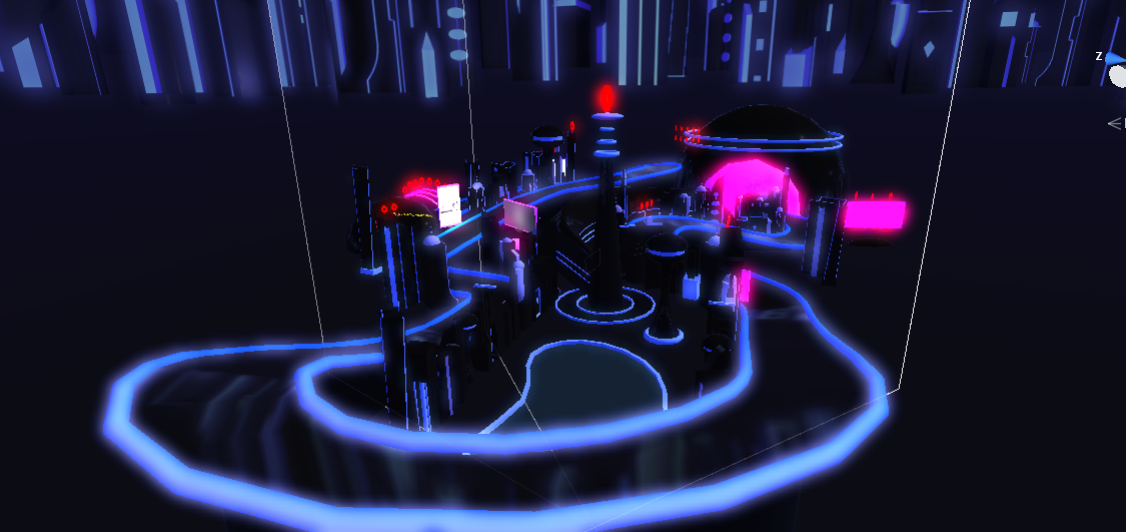Protocol: TAG
Protocol: TAG was my final capstone project at the University of Florida’s Digital Arts & Sciences graduate program. This project was made in conjunction with and for Multi Image Group in Boca Raton, Florida using a full body haptic chair for an incredibly immersive and engaging experience. My role in this project was UI/UX Designer and Environment Modeler.

-

Customer Needs
Our team was asked for 4 specific necessities in the completion of this project:
A short, engaging experience for use with an audience of all technological skill levels
Use of the TALON haptic chair
Data retention for marketing purposes
An overall re-brandable experience that can be changed to allow for use with multiple different brands.
-

What We Developed
Protocol: Tag is a laser tag themed track based target shooting game that let the players to face off in a laser battle with robot attackers to reach the highest possible score to compete against other players throughout the day.
How it Worked:
The 1 minute and 50 second experience used the TALON chair and controller to provide haptic feedback to the user for each interaction. As users hit and are hit by robot enemies, the controller and chair vibrate. As the ship moves through the track, the chair tilts along with each turn.
Information about how long users look at brand advertisements and scores for each user is collected and sent to an Excel sheet for use by MIG for better marketing use.
Finally, the advertisement space and environment space was made easily replaceable to fit different brand needs.
Constraints
The main constraints when working in VR are always the need for low processing power and the critical nature of avoiding motion sickness. Extensive user testing was necessary for preventing both of these issues from harming the overall project.
Final Changes
-
Aiming with the provided controller was difficult for users, therefore changes were made to the mathematics that made it easier and less sensitive to small movements. A crosshair was added to make sure users could see where they were aiming.
-
Being that some of our intended users will not be frequent gamers, the controls were made explicit with a short instructional animation in the seconds before the game begins.
-
Reducing motion sickness was a critical necessity of our production. At moments users identified increased levels of motion sickness, movement of the track was slowed, and processing time was improved by cutting down on unnecessary 3D assets. Cluttered areas were seen to increase motion sickness, so we cut back on the amount of buildings surrounding users at any one moment. The background was changed from a large amount of 3D buildings to a 2D skybox that moved and provided light in a similar manner to 3D objects. A stationary object, the ship dashboard, remains constantly within the user’s view to provide a sense of stability and grounding.

